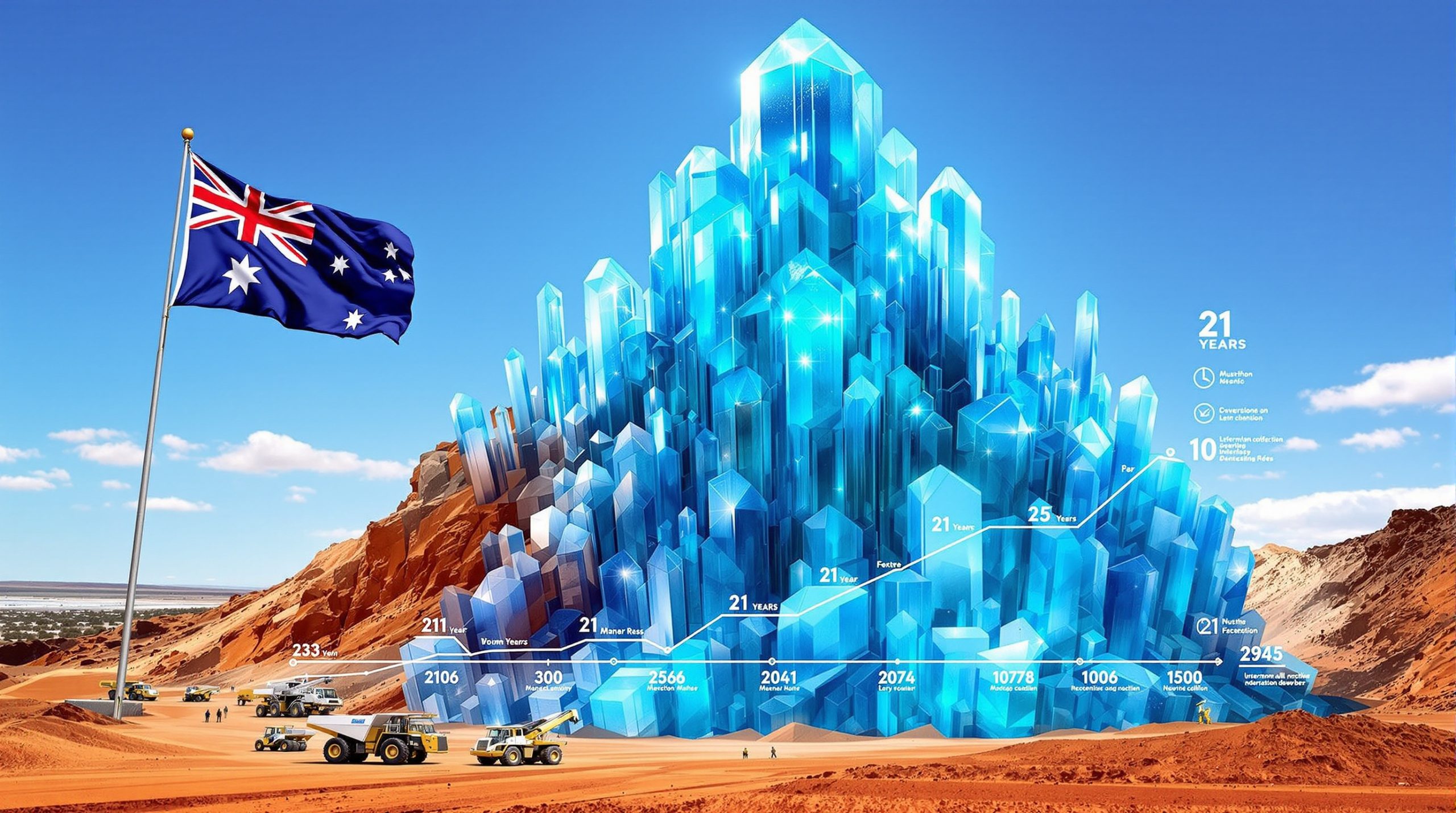Understanding the Shift in Global Supply Chains and Rutile Markets
The global supply chain landscape is undergoing a fundamental transformation, with critical minerals like rutile at the forefront of this strategic realignment. This shift represents more than temporary market adjustments—it signals a structural change in how nations approach resource security and industrial policy.
Key Market Transformation Indicators
- Deglobalization and US-China decoupling are driving comprehensive restructuring of critical mineral supply chains, creating new sourcing patterns and strategic opportunities.
- Evolving tariffs impact investment markets are reshaping trade flow patterns for rutile and titanium materials, establishing new competitive dynamics across global markets.
- Increasing supply chain fragmentation has led to benchmark pricing challenges and growing market opacity, complicating contract negotiations and financial modeling.
- Stringent ESG and sustainability mandates are fundamentally changing buyer preferences for rutile sourcing, prioritizing environmentally responsible operations.
- Projects in stable, non-Chinese jurisdictions are commanding premium valuations of 15-20% as industrial buyers prioritize supply chain resilience.
Strategic Market Metrics
- High-quality rutile projects in politically stable jurisdictions now command 15-20% valuation premiums over comparable assets in higher-risk regions.
- Byproduct economics provide critical margin protection in volatile markets, creating natural hedges against single-commodity price fluctuations.
- Free-dig mining operations deliver 30-40% lower energy requirements compared to conventional hard rock mining, improving both cost profiles and environmental performance.
- Corporate procurement strategies increasingly factor in supply chain resilience beyond simple cost comparisons, valuing operational continuity and regulatory predictability.
- Strategic partnerships have become essential for project development and market access, providing technical validation and reducing financing uncertainty.
How Are Global Supply Chains Being Restructured?
The Fundamental Shift Toward Economic Nationalism
The current realignment of global supply chains represents a structural transformation rather than a temporary policy adjustment. Economic nationalism has replaced globalization as the dominant paradigm, with governments prioritizing domestic manufacturing capacity and resource security over pure economic efficiency.
This shift carries profound implications for critical minerals like rutile, where production has historically been concentrated in a limited number of jurisdictions. The titanium value chain, from mining through processing to end products, is undergoing comprehensive restructuring as companies adapt to new geopolitical realities.
What's Driving US-China Decoupling in Critical Minerals?
Bipartisan policy continuity in the United States has established decoupling from Chinese supply chains as a long-term strategic objective rather than a partisan position. Recent administrations have maintained and expanded restrictions on technology transfers, critical minerals strategy sourcing, and industrial cooperation.
Key policy developments include:
- Continuation and expansion of tariff frameworks targeting strategic materials
- Implementation of domestic content requirements for government procurement
- Restrictions on technology transfers in critical mineral processing
- Incentives for reshoring manufacturing capabilities in strategic sectors
For rutile investors, these policies create both challenges and opportunities. Traditional supply patterns face disruption, while new premium markets emerge for materials sourced from politically aligned jurisdictions.
How Are Trade Policies Reshaping Market Fundamentals?
Recent trade policy shifts represent structural catalysts rather than temporary measures. Proposed tariffs of up to 60% on Chinese goods and 30% on South African imports fundamentally alter competitive dynamics in the rutile market.
These policies establish new baseline conditions for international commerce in titanium materials, creating:
- Pricing premiums for non-tariffed supply sources
- Competitive advantages for projects in politically aligned jurisdictions
- Increased importance of geographical diversification in supply portfolios
- Revised risk-weighted valuations for development projects
Mining companies must now incorporate potential tariff scenarios into their financial models, with projects previously considered marginal gaining new viability under restructured trade conditions.
What's Happening to Rutile Market Transparency?
Why Are Traditional Benchmarks Disappearing?
The discontinuation of Fastmarkets' CIF China rutile price assessment signals broader challenges in maintaining transparent price discovery mechanisms. This benchmark previously served as a critical reference point for contract negotiations and financial modeling throughout the titanium value chain.
Its loss creates several market challenges:
- Reduced transparency in price formation processes
- Increased difficulty in establishing fair market values
- Complications in structuring long-term supply agreements
- Barriers to entry for smaller market participants
For investors, benchmark erosion introduces additional uncertainty into valuation models, particularly for early-stage development projects where price forecasting plays a critical role in financial projections.
How Is Market Fragmentation Creating Investment Opportunities?
Supply diversification away from traditional sources creates structural opportunities for alternative producers. Projects in jurisdictions like Malawi, Australia, Mexico, and Mozambique gain premium strategic value as buyers seek reliable, politically stable suppliers.
This shift elevates the importance of fundamental project metrics including:
- All-in sustaining costs (AISC) relative to global competitors
- Net present value (NPV) calculations under various pricing scenarios
- Geological characteristics supporting operational efficiency
- Infrastructure access and logistical advantages
The premium for supply chain reliability extends beyond simple cost comparisons, with buyers increasingly factoring operational continuity, regulatory stability, and ESG compliance into sourcing decisions.
What Factors Are Redefining Rutile Investment Risk?
How Are Project Economics Being Reevaluated?
While low production costs remain fundamental, investors increasingly scrutinize the sustainability and reliability of cost projections. Capital expenditure discipline has become critical as financing costs rise and project approval processes face greater scrutiny.
Risk-adjusted internal rate of return (IRR) calculations must now incorporate:
- Supply chain resilience factors
- Regulatory stability assessments
- Infrastructure reliability metrics
- Labor market predictability
- Political risk evaluations
Projects with proven infrastructure access, stable labor markets, and predictable regulatory environments justify higher valuations despite potentially higher absolute costs compared to jurisdictions with elevated geopolitical risk profiles.
Why Are ESG Considerations Creating Value Premiums?
Environmental, social, and governance (ESG) considerations increasingly drive sourcing decisions across industrial markets. Buyers prioritize suppliers from politically stable, environmentally compliant jurisdictions, creating measurable premiums for qualifying projects.
This trend extends beyond regulatory compliance to encompass:
- Carbon footprint reduction initiatives
- Community engagement programs
- Transparent governance structures
- Ethical supply chain verification
- Sustainable water management practices
Low-carbon production methods, including free-dig mineralization that reduces energy-intensive processing requirements, align with corporate sustainability commitments. These factors translate into tangible commercial advantages, including preferential contract terms and long-term offtake commitments.
Case Study: How Does Kasiya Exemplify the New Investment Paradigm?
What Makes Kasiya a Strategic Rutile-Graphite Asset?
The Kasiya project in Malawi exemplifies how mining companies can position themselves to benefit from supply chain realignment. Its strategic attributes align directly with evolving market requirements for diversified, reliable rutile supply.
Key resource metrics include:
- 17.9 million tonnes of rutile resources
- 24.4 million tonnes of graphite resources
- World-class scale in both commodities
- Potential major supplier position in restructuring markets
The deposit's geological characteristics offer significant operational advantages, with free-dig, weathered ore hosted in soft, friable saprolite. This translates into lower energy requirements for processing and eliminates the need for energy-intensive drilling and blasting operations typical of hard rock mining.
How Do Kasiya's Economics Demonstrate Resilience?
The project's optimized pre-feasibility study demonstrates exceptional economics with:
- Pre-tax NPV exceeding US$2.3 billion
- Annual average EBITDA over US$400 million
- 64% operating margin providing substantial buffer against volatility
- Graphite byproduct economics with incremental production costs of only US$241 per tonne
This cost position places the project at the bottom of the global graphite cost curve, enabling profitable operations even in challenging market conditions. The byproduct structure provides natural diversification across two distinct commodity markets, reducing single-commodity exposure risk.
What Development Milestones Are Creating Investor Confidence?
Development milestones carry heightened significance in the current environment, where early-stage validation and regulatory clarity directly impact risk premiums and enterprise valuations.
Recent progress includes:
- Completion of pilot mining operations extracting 170,000 cubic meters of material
- Empirical data validation of pre-feasibility assumptions
- Definitive feasibility study targeted for completion in Q4 2025
- Technical collaboration with major mining partner
- A$60 million strategic investment providing development funding
Early-stage technical validation reduces risk premiums in volatile markets, improving enterprise value per ounce (EV/oz) valuations relative to purely conceptual projects. The combination of pilot mining results and ongoing feasibility work provides unusual visibility into project risks and operational parameters.
What Should Investors Monitor in the Evolving Rutile Landscape?
Which Policy Developments Signal Market Direction?
Investors should continuously monitor:
- US tariff policy evolution
- Trade agreement negotiations
- Chinese export regulations
- Supply chain security initiatives
- Critical mineral designation changes
Policy announcements often precede implementation by months, providing positioning opportunities for prepared investors. Changes in tariff structures or trade agreement terms directly impact competitive dynamics and should be incorporated into NPV sensitivity analyses.
How Are Price Discovery Mechanisms Evolving?
With traditional benchmarks under pressure, alternative price indicators gain importance:
- Titanium dioxide (TiO₂) price movements provide proxy indicators for rutile demand
- Efforts to establish new market benchmarks signal evolving price discovery mechanisms
- Industrial buyers' acceptance of alternative pricing structures indicates market adaptation
- Bilateral contract terms reveal underlying value perceptions
Investors should adjust price decks, offtake models, and margin assumptions based on emerging pricing trends. The transition period creates both opportunities and risks, requiring active monitoring and model updates as new market structures emerge.
Which Project Milestones Create Investment Inflection Points?
Company-specific developments provide critical insight into project viability:
- Feasibility study publications
- Permitting approvals
- Commercial agreement announcements
- Financing arrangements
- Joint venture expansions
- Offtake negotiations
Regular milestone achievement demonstrates execution capability, reducing perceived development risk and supporting premium valuations. Investors should weight management track records and milestone achievement against broader market developments when assessing investment timing.
Why Consider Rutile Investments in a Realigned Supply Chain World?
What Creates the Investment Thesis for Rutile Projects?
The global supply chain realignment and rutile investment create a compelling investment framework for qualified projects and management teams:
- Supply chain resilience premium: Projects in stable, non-Chinese jurisdictions garner structural value uplift as industrial buyers prioritize sourcing security over absolute cost minimization
- Cash flow robustness amid volatility: High NPV, low-cost operations with diversification offer margin protection against commodity price fluctuations
- Execution transparency lowers risk premium: Completed pilot programs and clear development timelines enhance project visibility and investor confidence
- Strategic backing amplifies scale: Major mining company investment reduces capital risk and validates technical potential
- Optionality across commodities: Byproduct revenue streams hedge against commodity-specific demand swings
How Should Investors Approach Strategic Positioning?
Global supply chain realignment represents a structural backdrop reshaping commodity markets rather than a temporary policy shock. The rutile market exemplifies how deglobalization trends create both challenges and opportunities, with traditional sourcing patterns giving way to diversified supply chains prioritizing reliability over cost optimization.
Investors should prioritize projects combining:
- Jurisdictional stability in politically aligned regions
- Financial optionality through multiple revenue streams
- Execution certainty demonstrated through milestone achievement
- Strategic partnerships providing technical and market validation
- Cost positioning supporting profitability across price cycles
Projects exemplifying this new investment model offer strategic alignment with supply chain realignment trends while maintaining the fundamental project economics necessary for long-term success.
FAQ: Rutile Investment in a Changing Global Landscape
What is rutile and why is it strategically important?
Rutile is a naturally occurring titanium dioxide mineral and the highest-grade titanium ore. It's strategically important as a primary feedstock for titanium metal production and high-grade titanium pigments used in aerospace, defense, medical implants, and high-performance coatings.
How are geopolitical tensions affecting rutile markets?
Geopolitical tensions are fragmenting traditional supply chains, creating pricing premiums for sources outside China and other politically sensitive regions. This fragmentation has disrupted benchmark pricing mechanisms while creating opportunities for new suppliers in stable jurisdictions.
What makes a rutile project attractive in the current market?
Attractive rutile projects combine low production costs, favorable mineralogy (particularly free-dig characteristics), stable jurisdictional positioning, byproduct revenue potential, and clear development pathways. Projects demonstrating these attributes command premium valuations in the restructuring market.
How do ESG considerations impact rutile investment decisions?
ESG considerations increasingly drive both industrial buyer preferences and investor valuations. Projects with lower carbon footprints, sustainable water management, community support, and transparent governance attract premium valuations and preferential offtake arrangements.
What role do strategic partnerships play in rutile project development?
Strategic partnerships provide technical validation, development funding, and market access for emerging rutile projects. These relationships reduce perceived development risk while potentially accelerating project timelines through shared expertise and resources.
Further Exploration:
Readers interested in learning more about global supply chain realignment and rutile investment can also explore related educational content on US-China trade war impact and mineral beneficiation opportunities. Furthermore, understanding the energy transition outlook provides additional context for the strategic importance of rutile in evolving global markets.
Want to Discover the Next Major Mineral Find Before the Market?
Discovery Alert's proprietary Discovery IQ model instantly identifies significant ASX mineral discoveries, transforming complex data into actionable investment opportunities that could deliver substantial returns. Explore historic examples of exceptional discovery outcomes by visiting our dedicated discoveries page and begin your 30-day free trial today.




